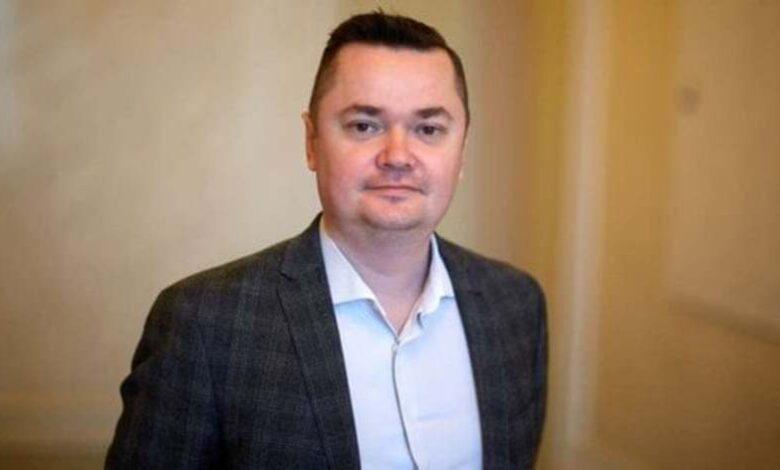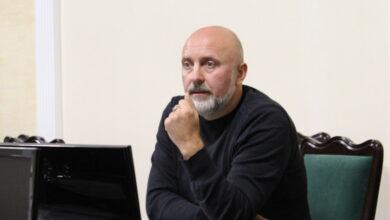Time to involve the rear in air defense: Maryan Zablotsky on decentralizing defense against “shaheeds”

The air war waged by Russia against Ukraine is changing its forms: along with missile attacks, attacks by Iranian kamikaze drones of the Shahed type are becoming more and more massive. They are cheap to manufacture, quickly adapt to Ukrainian air defense systems, and are capable of delivering devastating blows to rear infrastructure — energy, logistics, enterprises, warehouses, even medical facilities. In order to effectively counter this threat, Ukraine must create a new air defense architecture — not only powerful, but also flexible, adaptive, and massive.
In the conditions of a constant threat from kamikaze drones of the Shahed type, Ukraine should review its air defense model, convinced MP, economist Maryan Zablotskyi. According to him, the state has the resources and potential to build an effective system of destroying drones in a short period of time, but for this it is necessary to change the approach. The main thing is to involve communities, the private sector, and volunteers in real participation in PPO. Zablotsky emphasized that the future lies in the decentralization of responsibility in the rear and the creation of conditions for mass participation in the protection of critical infrastructure.
He said that he held long discussions with drone manufacturers, representatives of pilot schools and the All-Ukrainian Community Association. In his opinion, Ukraine already has access to effective and inexpensive means of defeating “shaheeds”. As an example, he gave an interceptor drone, the creation of which he personally financed more than a year ago – a $30,000 grant from US donor funds was directed to the development for the “Wild Hornets” team. This drone accelerates to 350 km/h, calmly catches up with the target and shoots it down, and its production costs about 90 thousand. UAH is 50 times cheaper than the price of the “shaheed” itself. Although radars are required for such a system, Zablotskyi noted that passive detectors will eventually appear, which will make it possible to do without expensive equipment.
He emphasized that there are already enough of such technologies in Ukraine and they have proven their effectiveness. But currently, Russia is increasing the production of “shaheeds”, and Ukraine continues to transfer mobile groups of territorial defense to the front, without massively introducing new interception systems. He sees the main problem as a lack of drone operators in the rear, because these specialists are critically needed on the front lines. Therefore, the deputy welcomed the resolution adopted by the Cabinet of Ministers on the experimental possibility for volunteers who are not subject to mobilization (in particular, young people under 25 years of age) to serve as air defense operators in the rear.
At the same time, the people’s deputy is convinced that this is not enough. The issue of responsibility remains key. The communities themselves are most interested in protection, because they are the ones most at risk. If it is a commercial object, a warehouse or a transformer, the responsibility must be borne by the owner. Communities, as the deputy noted, already have financial opportunities: they are given the right to donate to the army, and they actively do it. Many of them could organize their own air defense units and finance their activities, but this requires more powers.
Zablotsky put forward several concrete ideas. In particular, he proposed to allow the reservation of some air defense pilots who will work in the rear according to the principle of voluntary fire brigades. He also considers it necessary to provide simplified access to explosives for the destruction of targets, to simplify bureaucratic procedures – tenders, certification, tests – because, according to him, “shahedis” and their interceptors are being modernized faster than these procedures pass. The deputy believes that it is equally important to resolve the issue of legal responsibility: there have been cases when a downed drone caused damage, and the operator was subject to criminal prosecution. This demotivates to act in difficult conditions, so a balanced legal mechanism is needed.
The deputy emphasized that a similar system could be implemented by large private players — owners of critical infrastructure facilities. Fuel companies, energy companies, postal operators, etc. are able to maintain their own interceptors. This would not only facilitate the work of the Armed Forces, but also save money from the state budget. He emphasized that Russia’s plan is obvious — to stamp up to 500 “shaheeds” per day in order to flood Ukraine with drones. Instead, Ukraine’s task is to destroy them, spending less money and saving lives. According to the deputy, this is quite possible from a technical point of view.
At the same time, Zablotsky believes that the key to success is not a centralized system, but a restructuring of the model. He is skeptical of the idea that the Armed Forces will be able to independently cover the entire territory of Ukraine. One way or another, there will be gaps where the army will be forced to direct limited resources — both drones and specialists. That is why he is convinced: the only way out is the conditional decentralization of the Air Defense Forces, at least in terms of the fight against the Shaheds. At the same time, the deputy emphasized, the technical part must remain integrated into a single system — you cannot launch interceptors without coordination, otherwise the whole system will collapse.
Maryan Zablotskyi admits that it is a complex and multi-component task, but assured that he is ready to give specific answers in the near future. He announced the initiation of a draft law that will create additional incentives for the creation of PPO groups by communities, infrastructure owners and volunteers. People’s deputies would like to see mayors and heads of military administrations not at the sites of hits after an attack, but on the outskirts of cities, where they coordinate the work of air defense units created with their participation.
Maryan Zablotsky expresses a personal opinion, which may not coincide with the position of the editors.





